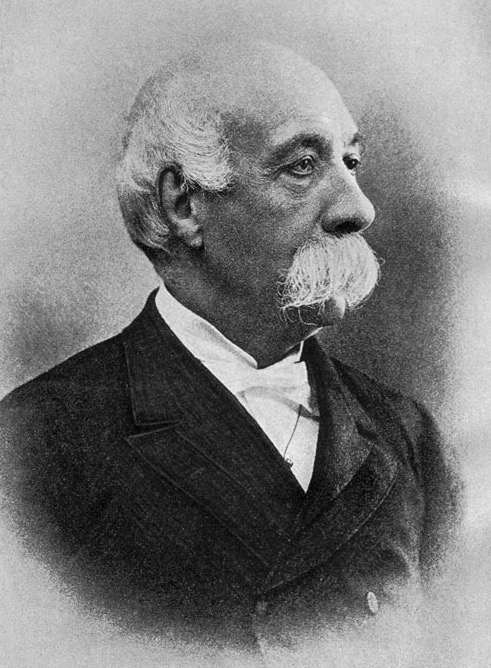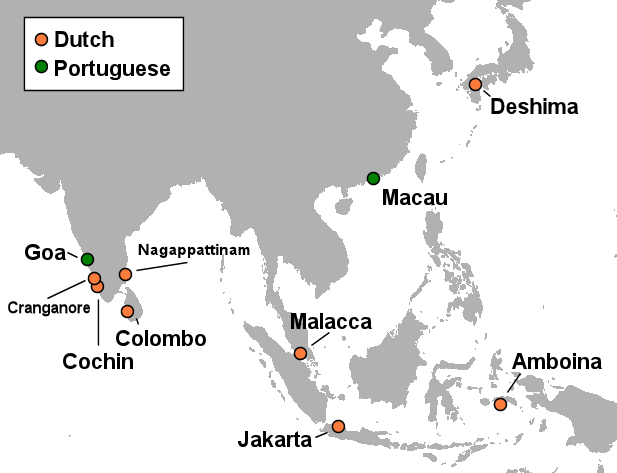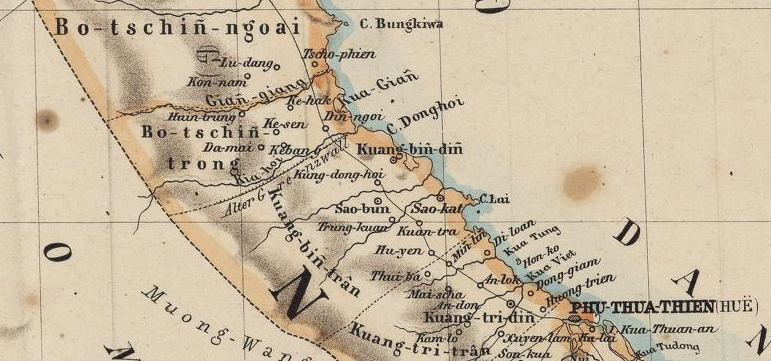|
Shamian Island
Shamian (also romanized as Shameen or Shamin, both from its Cantonese pronunciation) is a sandbank island in the Liwan, Guangzhou, Liwan District of Guangzhou, Guangdong, China. The island's name literally means "sandy surface" in Chinese. The territory was divided into two concession (territory), concessions given to France and the United Kingdom by the Qing dynasty, Qing government in the 19th century (1859–1943). The island is a gazetted historical area that serves as a tranquil reminder of the colonial European period, with quiet pedestrian avenues flanked by trees and lined by historical buildings in various states of upkeep. The island is the location of several hotels, a youth hostel, restaurants and tourist shops selling curios and souvenirs. Geography The island covers an area of 0.3 km2, 900 m from east to west, and 300 m from north to south. It is bordered in the south by the Pearl River (China), Pearl River, and it is separated from the mainland by a c ... [...More Info...] [...Related Items...] OR: [Wikipedia] [Google] [Baidu] |
Expedition To Canton
The Expedition to Canton was a British punitive expedition that captured the forts along the Pearl River, Guangdong province, China, on 2–3 April 1847. Beginning at the Humen Strait (Bogue), the British captured the forts leading up to the city of Canton (Guangzhou). The operation was in response to British subjects being attacked by the Chinese near Canton. Hong Kong Governor John Davis demanded redress from Chinese Commissioner Keying. Unsatisfied with his reply, Davis ordered Major-General George D'Aguilar, the commander-in-chief of British forces in China, to seize the forts approaching Canton and to prepare for an attack on the city to force reparations on the spot. The forts were captured, but Canton was spared after Keying agreed to punish the culprits and to allow entry into the city. Operations On the afternoon of 1 April 1847, D'Aguilar received communication from Davis with orders to proceed to Canton with force. At midnight, the following forces were embarked: ... [...More Info...] [...Related Items...] OR: [Wikipedia] [Google] [Baidu] |
Canton–Hong Kong Strike
The Canton–Hong Kong strike was a strike and boycott that took place in British Hong Kong and Guangzhou (Canton), Republic of China, from June 1925 to October 1926.Jens Bangsbo, Thomas Reilly, Mike Hughes. 995(1995). Science and Football III: Proceedings of the Third World Congress of Science and Football, Cardiff, Wales, 9–13 April 1995. Taylor & Francis publishing. , . p 42-43. It started out as a response to the May 30 Movement shooting incidents in which Chinese protesters were fired upon by Sikh detachments of the Shanghai Municipal Police in Shanghai. Incident On May 30, 1925, Sikh detachments of the Shanghai Municipal Police opened fire on a crowd of Chinese demonstrators at the Shanghai International Settlement. At least nine demonstrators were killed, and many others wounded. Escalating the incident, on June 23, 1925, a heated demonstration in Shameen Island took place which resulted in the Shakee Massacre. Troops under foreign command, perceiving shots bei ... [...More Info...] [...Related Items...] OR: [Wikipedia] [Google] [Baidu] |
Empire Of Japan
The Empire of Japan, also known as the Japanese Empire or Imperial Japan, was the Japanese nation state that existed from the Meiji Restoration on January 3, 1868, until the Constitution of Japan took effect on May 3, 1947. From Japan–Korea Treaty of 1910, 1910 to Japanese Instrument of Surrender, 1945, it included the Japanese archipelago, the Kuril Islands, Kurils, Karafuto Prefecture, Karafuto, Korea under Japanese rule, Korea, and Taiwan under Japanese rule, Taiwan. The South Seas Mandate and Foreign concessions in China#List of concessions, concessions such as the Kwantung Leased Territory were ''de jure'' not internal parts of the empire but dependent territories. In the closing stages of World War II, with Japan defeated alongside the rest of the Axis powers, the Japanese Instrument of Surrender, formalized surrender was issued on September 2, 1945, in compliance with the Potsdam Declaration of the Allies of World War II, Allies, and the empire's territory subsequent ... [...More Info...] [...Related Items...] OR: [Wikipedia] [Google] [Baidu] |
Portuguese In China
The Portuguese Empire was a colonial empire that existed between 1415 and 1999. In conjunction with the Spanish Empire, it ushered in the European Age of Discovery. It achieved a global scale, controlling vast portions of the Americas, Africa and various islands in Asia and Oceania. It was one of the most powerful empires of the early modern period, while at its greatest extent in 1820, covering 5.5 million square km ( million square miles), making it among the largest empires in history. Composed of colonies, factories, and later overseas territories, it was the longest-lived colonial empire in history, from the conquest of Ceuta in North Africa in 1415 to the handover of Macau to China in 1999. The power and influence of the Kingdom of Portugal would eventually expand across the globe. In the wake of the Reconquista, Portuguese sailors began exploring the coast of Africa and the Atlantic archipelagos in 1418–1419, using recent developments in navigation, cartography, and ... [...More Info...] [...Related Items...] OR: [Wikipedia] [Google] [Baidu] |
German Empire
The German Empire (),; ; World Book, Inc. ''The World Book dictionary, Volume 1''. World Book, Inc., 2003. p. 572. States that Deutsches Reich translates as "German Realm" and was a former official name of Germany. also referred to as Imperial Germany, the Second Reich or simply Germany, was the period of the German Reich; . from the unification of Germany in 1871 until the German revolution of 1918–1919, November Revolution in 1918, when the German Reich changed its form of government from a monarchy to a Weimar Republic, republic. The German Empire consisted of States of the German Empire, 25 states, each with its own nobility: four constituent Monarchy, kingdoms, six Grand duchy, grand duchies, five Duchy, duchies (six before 1876), seven Principality, principalities, three Free imperial city, free Hanseatic League, Hanseatic City-state, cities, and Alsace–Lorraine, one imperial territory. While Prussia was one of four kingdoms in the realm, it contained about two-thirds ... [...More Info...] [...Related Items...] OR: [Wikipedia] [Google] [Baidu] |
Italian Empire
The Italian colonial empire (), also known as the Italian Empire (''Impero italiano'') between 1936 and 1941, was founded in Africa in the 19th century. It comprised the colonies, protectorates, concession (territory), concessions and dependent territory, dependencies of the Kingdom of Italy. In Africa, the colonial empire included the territories of present-day Italian colonization of Libya, Libya, Italian Eritrea, Eritrea, Italian Somaliland, Somalia and Italian East Africa, Ethiopia (the last three being officially named "Italian East Africa, Africa Orientale Italiana", AOI); outside Africa, Italy possessed the Italian Aegean Islands, Dodecanese Islands (following the Italo-Turkish War), Albania (initially a Italian protectorate of Albania, protectorate, then in Kingdom of Albania in personal union with Italy (1939–1943), personal union from 1939 to 1943)Nigel Thomas. ''Armies in the Balkans 1914–18''. Osprey Publishing, 2001, p. 17. and also had some Concessions of Ital ... [...More Info...] [...Related Items...] OR: [Wikipedia] [Google] [Baidu] |
Dutch Colonial Empire
The Dutch colonial empire () comprised overseas territories and trading posts under some form of Dutch control from the early 17th to late 20th centuries, including those initially administered by Dutch chartered companies—primarily the Dutch East India Company (1602–1799) and Dutch West India Company (1621–1792)—and subsequently governed by the Dutch Republic (1581–1795) and modern Kingdom of the Netherlands (1815–1975). Following the ''de facto'' independence of the Dutch Republic from the Spanish Empire in the late 16th century, various trading companies known as '' voorcompagnie'' led maritime expeditions overseas in search of commercial opportunities. By 1600, Dutch traders and mariners had penetrated the lucrative Asian spice trade but lacked the capital or manpower to secure or expand their ventures; this prompted the States General in 1602 to consolidate several trading enterprises into the semi-state-owned Dutch East India Company (, VOC), which was gr ... [...More Info...] [...Related Items...] OR: [Wikipedia] [Google] [Baidu] |
Second French Empire
The Second French Empire, officially the French Empire, was the government of France from 1852 to 1870. It was established on 2 December 1852 by Louis-Napoléon Bonaparte, president of France under the French Second Republic, who proclaimed himself Emperor of the French as Napoleon III. The period was one of significant achievements in infrastructure and economy, while France reasserted itself as the dominant power in Europe. Historians in the 1930s and 1940s disparaged the Second Empire as a precursor of fascism, but by the late 20th century it was re-evaluated as an example of a modernizing regime. Historians have generally given the Second Empire negative evaluations on its foreign policy, and somewhat more positive assessments of domestic policies, especially after Napoleon III liberalised his rule after 1858. He promoted French business and exports. The greatest achievements included a railway network that facilitated commerce and tied the nation together with Paris a ... [...More Info...] [...Related Items...] OR: [Wikipedia] [Google] [Baidu] |
United States
The United States of America (USA), also known as the United States (U.S.) or America, is a country primarily located in North America. It is a federal republic of 50 U.S. state, states and a federal capital district, Washington, D.C. The 48 contiguous states border Canada to the north and Mexico to the south, with the semi-exclave of Alaska in the northwest and the archipelago of Hawaii in the Pacific Ocean. The United States asserts sovereignty over five Territories of the United States, major island territories and United States Minor Outlying Islands, various uninhabited islands in Oceania and the Caribbean. It is a megadiverse country, with the world's List of countries and dependencies by area, third-largest land area and List of countries and dependencies by population, third-largest population, exceeding 340 million. Its three Metropolitan statistical areas by population, largest metropolitan areas are New York metropolitan area, New York, Greater Los Angeles, Los Angel ... [...More Info...] [...Related Items...] OR: [Wikipedia] [Google] [Baidu] |
Cochinchina
Cochinchina or Cochin-China (, ; ; ; ; ) is a historical exonym and endonym, exonym for part of Vietnam, depending on the contexts, usually for Southern Vietnam. Sometimes it referred to the whole of Vietnam, but it was commonly used to refer to the region south of the Gianh River. In the 17th and 18th centuries, Vietnam was divided between the Trịnh lords to the north and the Nguyễn lords to the south. The two domains bordered each other on the Son River (Vietnam), Son River. The northern section was called Tonkin by Europeans, and the southern part, , was called Cochinchina by most Europeans and Quinam by the Dutch East India Company, Dutch. Jean-Louis Taberd, in his 1838 map, called Tonkin as "Cocincina exterior" () and "Cochin China" as "Cocincina interior" (). In this classic 1838 map, the Gianh River is north of "Lũy Sầy" (an incorrect pronunciation and spelling of "Lũy Thầy") demarcating "Cocincina exterior" (or "Outer Annam") from "Cocincina interior" (or "In ... [...More Info...] [...Related Items...] OR: [Wikipedia] [Google] [Baidu] |





